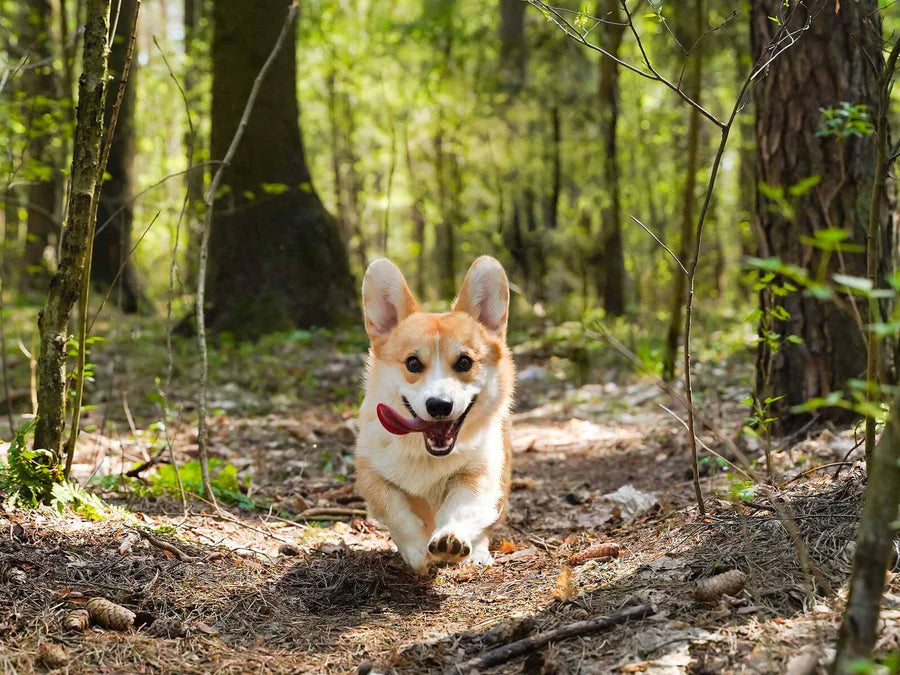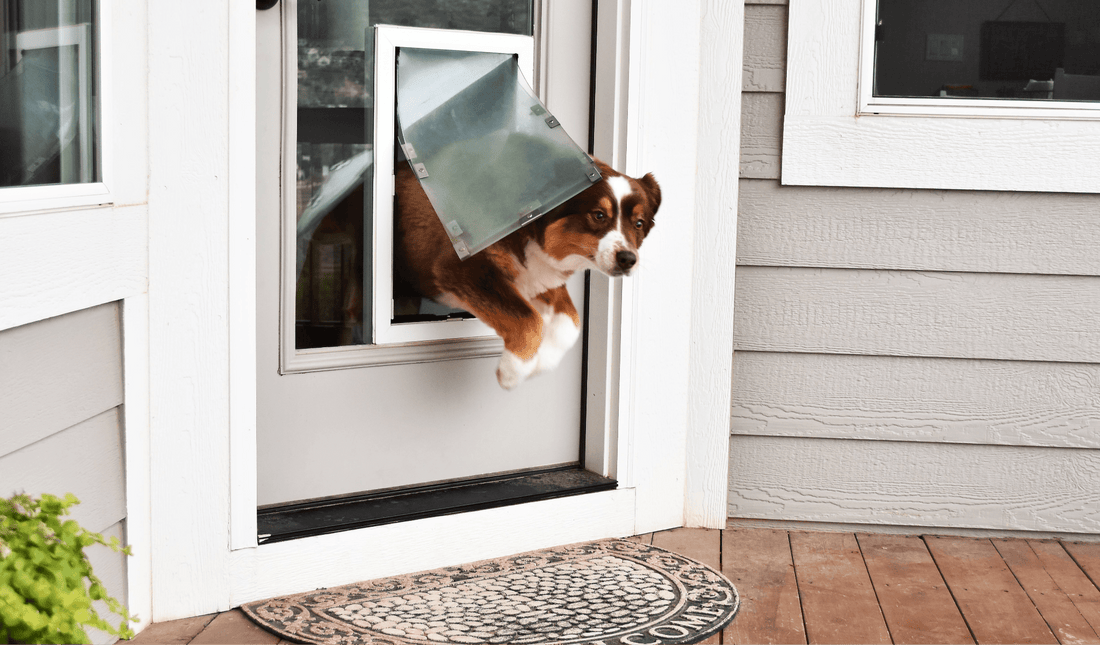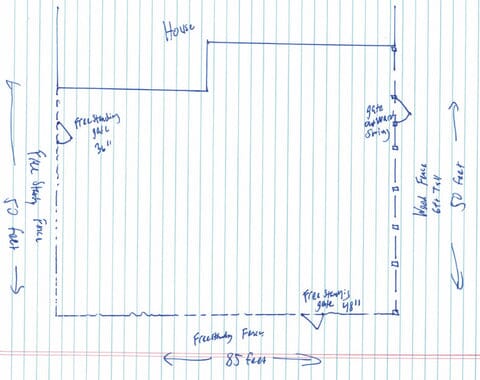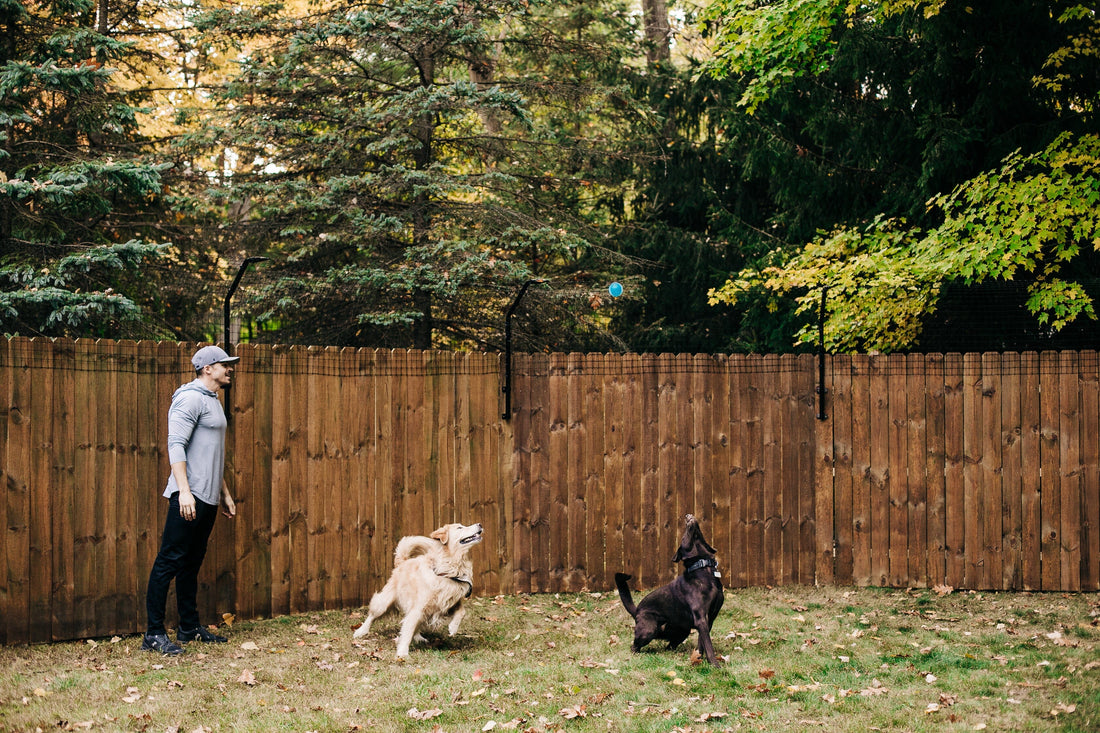Dogs come in various breeds, sizes, athletic abilities, and personalities. Some pups are homebodies and prefer to stay nearby at all times. Others are more independent and have no qualms with exploring on their own, even if it takes them somewhere unfamiliar.
For dogs who like to wander, run, or visit neighbors, many dog owners prefer to keep them contained safely in their own yards. When creating a safe containment barrier for your dog, you have two main dog fence solutions: Building a new fence or modifying an existing fence already in your yard. When choosing the best dog fence for you, the good news is that you have more than one option for both!
Building the Best New Dog Fence
The main reason you may choose to build a new fence is that your yard doesn’t already have an existing fence, in which case, a fence barrier can prevent your dog from roaming or running away. However, even if your yard already has an existing fence, you may decide to build a new dog fence for other reasons. It may be that you don’t want your dog(s) to have full access to the fenced portion of your yard, your existing fence may not be in the best condition, or you may need to create a partition to keep dogs separated outside. Whatever your reason, below, you will find the top six options for building the best dog fence.
1. Dog Proofer Freestanding DIY Dog Fence

The Dog Proofer Freestanding Dog Fence is designed to create a secure perimeter that keeps your dog(s) safely contained without blocking the view. With a simple installation process that does not require post-hole digging or concrete, the fence can be configured to suit your needs, work around obstacles, exclude specific areas of your yard, and even be installed on slopes and hills.
Dog Proofer’s Freestanding DIY Dog Fence makes the best dog fence list because it utilizes all metal components and fencing materials built to last in outdoor conditions and holds up to even the strongest dogs! Out of all the dog fence solutions, this is the only one that offers a climb-proof option for Houdini dogs.
2. Pet Playgrounds DIY Dog Fence

The DIY Dog Fence by Pet Playgrounds is a budget-friendly alternative with a more involved installation process. It is available in a variety of heights and lengths to suit your needs. However, their website may feel overwhelming and lacks meaningful testimonials about the company or its track record.
3. EasyPet Fence Dog Fence Kit

As the cheapest DIY dog fence option, the EasyPet Fence Dog Fence Kits are one of the best dog fence choices to use if you’re on a budget. They are available in a variety of styles to suit your needs. However, some may find that the limited options for height are not suitable for large dogs, skilled jumpers, or escape artists.
4. Traditional Fencing

Traditional fencing is available in a wide variety of types, styles, and heights, making it one of the best dog fence options. This means a traditional fence can be built to just about any height or length specifications. A traditional fence can be built to match the aesthetics of your home, and some fences can even provide privacy. However, the main drawback of these dog fence solutions is the cost. Traditional fences may cost three or more times as much as a DIY dog fence. Especially if someone else is installing it for you, it could be even more.
5. Invisible Dog Fence

Some dog owners opt to install an invisible dog fence instead of traditional fencing. These are available as either wireless or in-ground wired systems. Pricing varies depending on the system's type, range, and quality. But as one of the best dog fence options, it tends to be more affordable than most traditional fencing solutions. Unfortunately, many find that it is not an effective solution for safely containing their dogs.
6. Modular Pet Fence

Modular pet fencing, like that by Snap Fence, can be installed quickly and reconfigured regularly to allow for a larger containment area. The limitations in height are not suitable for all dogs, but modular pet fencing can be easy to install and may work well for small dogs or puppies.
Modifying an Existing Fence to Create the Best Dog Fence Solution
If you already have an existing fence that your dog is managing to escape over (or under), you may need to consider dog fence modification solutions to prevent further escapes. For dogs going over the fence, it’s important to determine how they are getting over. Are they climbing, jumping over easily, or using something nearby to help them?
One of the best ways to stop dog fence escapes is to assess the fence line and ensure that any jumping aids are removed near the fence. This could be anything that your dog is using to help it escape – a storage container, lawn furniture, or a stack of firewood, for example.
If your dog is still managing to escape after any jumping aids have been removed, then you might consider modifying the fence itself to help keep it contained. The best method for prevention will depend on the mode of escape. Below are the best dog fence modification systems for an existing fence for the most common types of escapes.
1. Dog Proofer

Dog Proofer provides humane fencing solutions to prevent dogs from jumping, climbing, or digging under a traditional fence of any type. They even offer dog fence solutions to prevent small dogs or puppies from slipping through wide gaps in a fence.
No matter which method is your dog’s preferred method of escape through your existing fence, Dog Proofer has you covered with a variety of options. With the flexibility to be installed on any fence in nearly any configuration, the materials and components used with all Dog Proofer systems are built to last outdoors and hold up to dogs of all breeds and sizes.
For the most talented escape artists, the Houdini-Proof Fence Extension System lives up to its name! It makes one of the best dog fence options because it features a curved top fence extension that has never been beaten.
2. Coyote Rollers

An alternative fence topper solution is a coyote roller system. Roller systems were initially designed to prevent coyotes from jumping or climbing over a fence that contained livestock. The rollers are installed along the top of the fence. When a coyote jumps up, the roller spins so that it cannot gain footing at the top of the fence to pull itself over, making rollers effective dog fence solutions.
Because domesticated dogs have similar anatomy to coyotes, rollers may work to contain some dogs, making them one of the best options for securing a dog fence. There are a variety of brands of commercially available coyote rollers. Generally, they are recommended for fences that are at least six feet tall. They are non-intrusive and virtually unnoticeable; however, they tend to be more expensive and less effective than Dog Proofer fence extension systems.
3. Fence Toppers/Extenders

Generally, fence toppers or extenders are not necessarily designed with dog containment in mind. Rather, they are decorative fence toppers that also happen to increase the overall height of your fence. This option may work for some shorter fences and dogs who have not learned to climb.
The best thing about dog fence toppers or extenders is that they are decorative and look nice when installed. They may even offer added privacy. However, in many instances, they may not provide enough additional height to prevent escapes, particularly for fences less than five feet tall.
4. Landscaping

For some dogs, certain types of landscaping choices may deter them from jumping over or digging under a fence. Planting large, dense shrubs in front of a fence prevents the majority of dogs from being able to jump directly up to reach the top of the fence, which means greenery is one of the most effective dog fence escape solutions. The launching point gets moved back away from the fence, making it more difficult to jump high enough over the fence. Likewise, planting dense or thorny shrubs and plants in front of a fence may deter dogs from digging in those areas.
Unfortunately, landscaping choices alone might not help make the best dog fence for the most persistent and determined dogs.
5. DIY Fence Extensions

The internet is filled with DIY ideas for preventing dogs from jumping over a traditional fence. Most of them utilize supplies that can be found at your local hardware store. Typically, most plans use some type of tubing, such as PVC, along with chicken wire or garden fence to create either vertical fence extensions or curved or angled extensions along the top perimeter of the fence. There are even tutorials out there for DIY rollers!
However, the main drawback to DIY fence extensions or DIY rollers is that the materials used are not designed for use with pets. Some people may find that the durability is lacking, the installation is tedious, and the outcome is not as effective as they’d hoped. Without proper research, this may not be the best option for creating a dog fence.
6. DIY Dig-Proof Barrier

And if your dog is going under the fence, there are DIY dog fence solutions for that as well. Again, these options often use supplies that can be found at a local hardware store. Aside from landscaping, there are two main DIY solutions for preventing a dog from digging under the fence.
The first is to use chicken wire or wire garden fencing to create an L-footer along the bottom of the fence. For some dogs, the wire on the ground is deterrent enough. But for more persistent dogs who try to pull the wire away from the fence, chicken wire or garden fence may not withstand the claws and teeth of a determined dog.
The second best dog fence option is a bit more tedious and labor-intensive. That is to dig out a channel along the perimeter of the fence, then backfill it with concrete, heavy stone, or gravel. This creates a dig-proof channel around the perimeter of the fence but may be expensive and time-consuming.
Whether you need to build a new fence or modify an existing fence, you have several options! There are a variety of solutions that fit practically any budget. However, when it comes down to choosing which option is the best dog fence for you, it’s always best to first consider your dog(s) needs and personalities.
While a Chihuahua can typically be contained by a short fence and may be happy with a small area, a Great Dane likely needs a taller fence and a much larger area! A dog that tends to stick close to home may be deterred from wandering by a simple physical boundary, while an independent dog may need all the bells and whistles to keep it safely contained.
For those dogs – the talented jumpers, persistent diggers, notable climbers, the escape-artist Houdini dogs – you want effective dog fence solutions. That is why Dog Proofer makes the top of both of these lists. With multiple options for an easy-to-install Freestanding DIY Dog Fence and several solutions for modifying an existing fence, Dog Proofer has you covered.
Build a Fence with Dog Proofer
If you’re looking for an effective fencing solution, Dog Proofer can help! We offer the best dog fence options to keep your dog safely contained while allowing it to enjoy nature. Our high-quality fences are made to last the test of time and are pet-safe. Best of all, we offer a 3-Year Warranty on parts, and we replace damaged components for free!
Our experts can help you create a barrier based on your budget, available space, and your dog’s needs. Reach out to one of our planning engineers to start building an enclosure today!
To learn more about Dog Proofer and our available solutions, please visit DogProofer.com.





